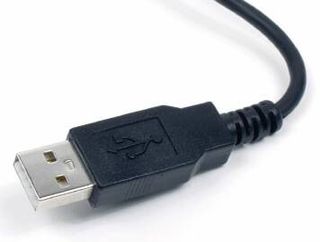The Ultimate Mouse Hunt
Yin And Yang
A balance thus needs to be found between mouse speed and preciseness of cursor positioning to suit a given screen resolution. For example, 800 dpi (cpi) at 1280 x 1024 is probably a good compromise - in general terms, at least. However, the intrinsic preciseness of the mouse plays a primordial role in resolution. The more precise the mouse sensor and the calculation of coordinates, the more the resolution can be increased, because you'll lose less preciseness of control. Still, there are limits imposed by hand movement. If a tiny trembling in your index finger shoots you across the screen, it won't do you any good. With the improvement in sensor precision, it's become possible to use higher resolutions. As long as you don't lose preciseness, greater speed is an advantage for better reactivity. That's evident above all with games, and to a lesser degree with graphics work.
The resolution can also be modified by adjusting the mouse-speed cursor in your mouse properties. Each manufacturer may also index its mouse differently. And you may decide that with the cursor in the middle, you're mouse is operating at its maximum physical resolution and any further acceleration will be via interpolation, with a loss of precision. In conclusion, resolution is a complex issue and its effects on mouse performance are contradictory.
Bottleneck
Finally, to make things even more complicated, transmission of data from the mouse to the computer is also a limiting factor. USB theoretically limits the number of exchanges to 125 per second. If you increase the resolution, only the X-axis measurement will actually be transmitted. Here's an example: You cover a wide distance with 1,000 counts in two seconds, or 500 in one second. But the USB port can only transmit 125 counts, or four times fewer. The result is that the measurements sent won't be any less precise and the mouse will be in the right place, but the movement from one place to another won't be as fluid as it could be, because positions have been skipped. With the first 1,600-dpi mouse we noticed that accelerating the USB port added fluidity and made mouse control easier and more precise in high resolution. Unfortunately, accelerating your USB port makes the computer unstable.

Stay on the Cutting Edge
Join the experts who read Tom's Hardware for the inside track on enthusiast PC tech news — and have for over 25 years. We'll send breaking news and in-depth reviews of CPUs, GPUs, AI, maker hardware and more straight to your inbox.
-
Ephebus Stay away from this mouse. I've had two, and both started double clicking with the left button after about a year. Logitech's forums are full of topics on this issue. The latest versions of the G7 also showed a regrettable decrease in manufacturing quality - my first mouse had a rubber coating around it (release A0), while on my second G7 (release A2) it was replaced by cheap plastic. Issues with the receptor dongle losing connection with the mouse are also frequent, and Logitech will go to great lengths to avoid honoring their 3-year warranty.Reply
